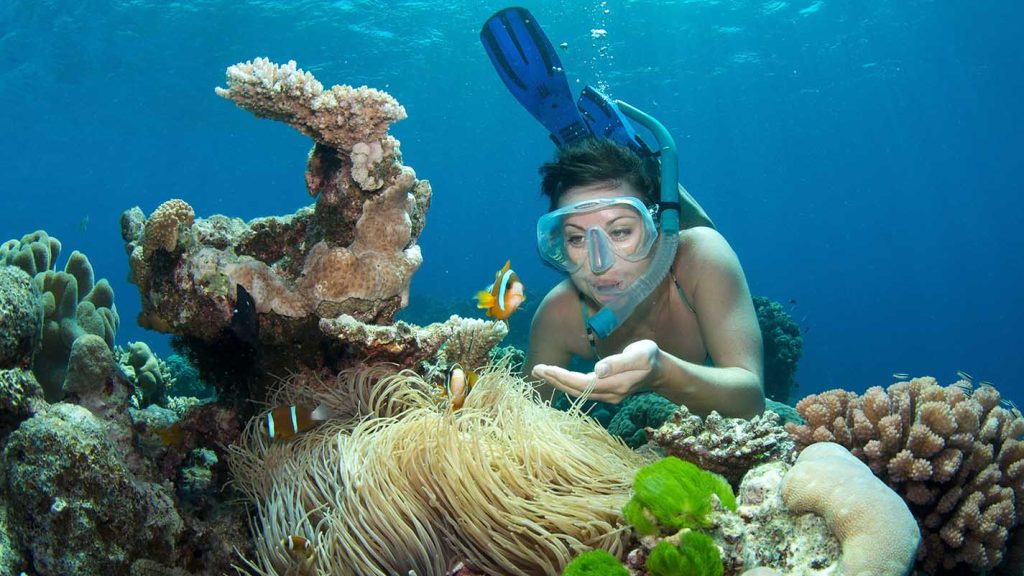When I first set out to explore Cairns, I was both excited and a bit apprehensive. As a popular tourist destination in Tropical North Queensland, Cairns offers breathtaking landscapes, from the Great Barrier Reef to ancient rainforests. But, as with any destination, ensuring my safety during the trip was a priority. Over the course of my visit, I gathered plenty of tips, learned from my experiences, and made sure I was well-prepared to tackle both the adventure and the challenges that come with it.
Whether you’re planning to dive into the coral reefs, trek through the rainforest, or simply relax on the beach, keeping your safety in mind will make your trip far more enjoyable. This guide walks through the most common safety concerns and practical advice to help you navigate Cairns smoothly.
1. Understanding the Environment: Know What You’re Dealing With
Cairns is a tropical paradise, and while the weather and the environment are stunning, they also pose certain risks. Knowing what you’re up against can make a huge difference in your overall safety.
The Heat and Sun
Cairns is warm year-round, with temperatures hovering between 23°C and 31°C (73°F to 88°F), even in the cooler months. The sun can be extremely intense, particularly between 10 AM and 3 PM. The combination of high humidity and powerful UV rays can lead to dehydration or sunburn if you’re not careful.
I quickly realized that sunscreen is a must. Even on overcast days, the UV index can be high. I applied a generous amount of broad-spectrum sunscreen with SPF 50+ every two hours. I also made sure to carry a reusable water bottle, which helped me stay hydrated during excursions like walking tours and reef trips.
Stingers and Marine Life
The Great Barrier Reef is one of the world’s most famous marine ecosystems, but it also comes with certain risks, particularly when it comes to stingers (jellyfish). Box jellyfish, which are potentially deadly, are a concern from November to May. While jellyfish stings are uncommon in Cairns proper, they’re a real risk when swimming or snorkeling in the open waters of the reef.
I took several precautions:
Wear protective clothing: Most tour operators offer stinger suits, which are lightweight full-body suits that protect you from jellyfish stings. I always wore one when snorkeling or swimming.
Stay in designated swimming areas: Lifeguarded areas, especially along the Cairns Esplanade Lagoon, are safe from stingers because nets keep jellyfish out of the swimming zones. It’s important to follow signs and respect the safety measures set up by local authorities.
Learn the signs of a sting: If you do get stung, seek medical help immediately. Symptoms like intense pain, nausea, and difficulty breathing should be treated seriously.
Crocodiles and Wildlife

Cairns is home to both saltwater and freshwater crocodiles. These reptiles can be found in many of the rivers and estuaries in the region, although attacks on humans are rare. Still, it’s essential to be aware of your surroundings.
I made it a point to stick to popular and regulated activities that had proper safety protocols, like crocodile-spotting tours in protected environments or guided walks where experts know how to keep everyone safe. Always follow the advice of your guide and stay away from the water’s edge, especially in areas known for crocodile activity.
2. Safe Travel Around Cairns
Navigating Cairns and its surroundings requires a bit of thought, especially when you’re venturing into remote areas.
Renting a Car: Road Safety Tips
Most tourists, including myself, opted to rent a car for flexibility, particularly if they wanted to explore places like Kuranda or Cape Tribulation. Driving in Cairns is relatively straightforward, but there are a few things you should be aware of.
Wildlife on the Road: Be cautious when driving at night. Kangaroos and other wildlife often cross roads in the evening and early morning. I almost hit a kangaroo on a dark road near Port Douglas, which served as a reminder to keep my speed down at night.
Tropical Weather: Cairns is prone to sudden rainstorms, especially during the wet season (November to April). The roads can get slippery, and flooding can occur quickly. I experienced heavy rains during my trip, which led to flash floods in some areas. Always check the weather forecast and road conditions before setting out.
Remote Locations: If you’re driving out of Cairns to more secluded areas, it’s essential to have a GPS, a full tank of petrol, and a spare tyre. Some roads, especially in the rainforest areas, can be narrow, winding, and remote. Make sure your phone has signal or bring a satellite phone for emergencies.
Public Transport and Taxis
Public transportation in Cairns is somewhat limited, but the local buses are reliable if you’re staying within the city. However, if you’re looking to venture beyond the city, buses and public transport can become less frequent. Taxis and ridesharing services like Uber are available, but if you’re traveling long distances, it’s better to book in advance, especially for early morning tours.
Cycling
Cairns is a cyclist-friendly city, with designated bike paths along the Esplanade and beyond. I rented a bike for a day trip around the Cairns Botanic Gardens, and it was a great way to explore. However, wearing a helmet is mandatory, and it’s important to be aware of traffic. Some roads around the city can be busy, so always be cautious when cycling.
3. Health and Emergency Services
While Cairns has a range of medical facilities, it’s always good to know what to do in case of an emergency.
Medical Supplies and Insurance
Before my trip, I ensured I had travel insurance that covered medical emergencies, including evacuation if necessary. Cairns has a number of pharmacies and clinics, but depending on where you are, emergency medical help can be far away. It’s always best to bring a well-stocked first aid kit, especially for remote excursions. This should include:
Painkillers
Anti-inflammatory medication
Band-aids and antiseptic cream
Insect repellent (particularly for rainforest treks)
Any personal medication
Hospitals and Clinics
Cairns has two major hospitals—Cairns Hospital (public) and Cairns Private Hospital. They offer 24-hour emergency services. If you’re in a remote location, I recommend calling 000 (Australia’s emergency number) for immediate help, as they can dispatch an ambulance or helicopter if needed.
I had a minor issue when I got a heat rash during my rainforest hike, but I was able to visit a local pharmacy for some treatment. It’s reassuring to know that there are plenty of health resources in Cairns for any unanticipated issues.
4. Staying Safe on Tours and Activities
Cairns is home to some of Australia’s best tours, from diving and snorkeling to rainforest walks and river cruises. To stay safe on these tours, it’s important to follow safety protocols and always opt for licensed operators.
Diving and Snorkeling

Whether you’re diving at the Great Barrier Reef or snorkeling in the Coral Sea, safety is paramount. I went on a snorkeling tour, and the guides emphasized the importance of listening to their safety briefings. Here are some of the key points I followed:
Stay with the group: Don’t wander off on your own, especially in areas where currents are strong or the visibility is low.
Know your limits: I made sure to tell the crew if I felt uncomfortable or tired. There’s no shame in sitting out or taking a break.
Respect the marine life: Touching coral or marine creatures can harm them. I kept a safe distance from wildlife and used biodegradable sunscreen to protect the delicate reef.
Rainforest Walks
Guided rainforest walks in places like the Daintree Rainforest or Mossman Gorge can be magical, but they also pose potential risks, such as slips, stings, and dehydration. I was careful to wear sturdy shoes with good grip, use insect repellent, and bring water. Staying with the group ensured that the guide could assist with any potential dangers, from identifying dangerous plants to spotting snakes.
Ziplining and Skyrail
For those seeking an adrenaline rush, Cairns offers thrilling activities like ziplining and the Skyrail Rainforest Cableway. While these activities are generally safe, I made sure to check that the operators were accredited and followed all safety regulations. I felt comfortable knowing that staff were experienced, and equipment was thoroughly checked before use.
5. Staying Vigilant and Avoiding Common Scams
Though Cairns is generally very safe, like any tourist hotspot, there are some scams or petty crimes to watch out for.
Keep your belongings secure: I kept my valuables in a waterproof dry bag when I was out on the water or walking around the city. Pickpockets aren’t a big issue in Cairns, but it’s always a good idea to stay vigilant, especially in crowded areas.
Be cautious with street vendors: I encountered a few vendors offering “too-good-to-be-true” deals on tours and souvenirs. I made sure to book activities through reputable companies, and avoided any sales that seemed overly aggressive or suspicious.
6. In Conclusion: Ensuring a Safe and Memorable Experience
Cairns is a paradise with so much to offer. With the right preparation, you can enjoy its wonders while staying safe. Whether it’s through understanding the natural hazards, following safety protocols on tours, or being aware of your surroundings, a bit of precaution can go a long way in ensuring you have a smooth and unforgettable journey. With safety as a priority, you’ll be free to immerse yourself in the vibrant culture and jaw-dropping landscapes this tropical gem has to offer.